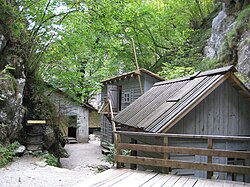
Cerkno is a small town in the Littoral region of Slovenia. It has around 2,000 inhabitants and is the administrative centre of the Cerkno Hills. It is the seat of the Municipality of Cerkno.

Carinthia, also Slovene Carinthia or Slovenian Carinthia, is a traditional region in northern Slovenia. The term refers to the small southeasternmost area of the former Duchy of Carinthia, which after World War I was allocated to the State of Slovenes, Croats and Serbs according to the 1919 Treaty of Saint-Germain. It has no distinct centre, but a local centre in each of the three central river valleys among the heavily forested mountains.

Domžale is a town and the seat of Municipality of Domžale in Slovenia. The town lies near the foothills of the Kamnik Alps and is crossed by the Kamnik Bistrica River. It includes the hamlets of Zgornje Domžale, Spodnje Domžale, and Študa. Domžale is known today for its small businesses, agriculture, and light industry.
Kočevski Rog or Kočevje Rog or simply Rog is a karstified plateau in the Kočevje Highlands above the Črmošnjice Valley in southeastern Slovenia. The plateau is part of the traditional Lower Carniola region of Slovenia and of the Dinaric Alps. The highest area is the central part, with the 1099-metre-high peak of Veliki Rog. The plateau is densely forested. The only ski slope in Lower Carniola, Rog-Črmošnjice also lies in the vicinity of Rog.
Il Cuore nel Pozzo is a TV movie, produced by state broadcaster RAI, that focuses on the escape of a group of children from Tito's partisans in the aftermath of World War II, as they start an ethnic cleansing of all Italians from Istria and the Julian March. The word "pit" in the movie's title refers to a foiba, indicating foibe massacres.

The Battle of Dražgoše was a Second World War battle between the Slovene Partisans and Nazi Germany armed forces, which took place between January 9 and January 11, 1942, in the village of Dražgoše in German-annexed Slovenia. This battle was the first direct confrontation between the two. It ended with brutal reprisals of German forces against the villagers and the destruction of the village.

The Ljubljana University Medical Centre or Ljubljana UMC is the largest hospital centre in Slovenia based in Ljubljana. It was officially opened on 29 November 1975 and as of December 2019 has over 2,100 beds and over 8,300 employees, making it one of the largest hospital centres in Central Europe.
Žale Central Cemetery, often simply Žale, is the largest and the central cemetery in Ljubljana and Slovenia. It is located in the Bežigrad District and operated by the Žale Public Company.

The Frankolovo crime was one of the worst Nazi war crimes in the territory of present-day Slovenia during World War II. On February 12, 1945, members of the Wehrmacht killed one hundred Slovene civilians at Graben in Stranice, near Frankolovo.

The Prešeren House is a house in the village of Vrba in the Municipality of Žirovnica in Slovenia. It is the house where the Slovene poet France Prešeren was born in 1800. The Slovene theologian and archbishop Anton Vovk was also born in the same house in 1900. The house is a good example of an Upper Carniolan farmhouse. Since 1939, it has housed a small museum collection with furnishings from the poet's time.

Čepovan is a settlement in the Municipality of Nova Gorica in western Slovenia. Apart from the main village of Čepovan, it extends to include a number of smaller hamlets in the valley known as Čepovanski Dol: Dol, Drage, Frata, Griva, Lazna, Močile, Podčepovna, Pod Goro, Puštale, Robe, Rut, Šulgi, Tesno, Vrata, and Vrše.
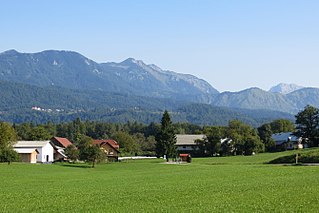
Komendska Dobrava is a dispersed settlement in the hills north of Komenda in the Upper Carniola region of Slovenia.
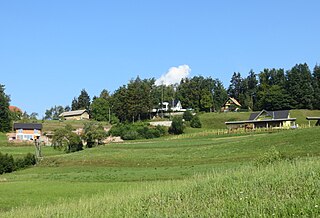
Dupeljne is a small settlement in the hills north of Lukovica pri Domžalah in the eastern part of the Upper Carniola region of Slovenia.

Ernest Peterlin was a Slovene military officer who rose to a senior position in the Royal Yugoslav Army prior to the Second World War. Married to Anja Roman Rezelj. A decided anti-Communist, during the war he became a prominent anti-Partisan military leader and one of the main exponents of the pro-Western faction of the Slovene Home Guard, an anti-Communist collaborationist militia active in parts of German-occupied Slovenia between 1943 and 1945. In 1945, he was tried and sentenced to death by the new Yugoslav Communist authorities and executed in 1946.

Iška is a settlement in Upper Iška Valley in the Municipality of Ig in central Slovenia. The entire municipality is part of the traditional region of Inner Carniola and is now included in the Central Slovenia Statistical Region. The settlement includes the hamlet of Mala Vas, where the road to Gornji Ig branches off.

Boštjan Burger is a Slovenian informatician, geographer, a panoramic and VR panoramic photographer and a speleologist. He was founder of the Burger Landmarks website and had retired as computer programmer in the 1990s to become a geographic researcher on the hydrology of waterfalls. He used VR panoramas as a tool in the research of landscapes. He was greatly influenced by geographer Don Bain for documenting the landscape with VR panoramas and Hans Nyberg for his use of QuickTime VR fullscreen panoramas.
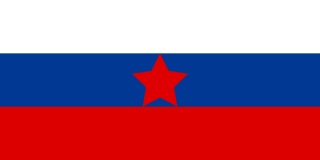
The Slovene Partisans, formally the National Liberation Army and Partisan Detachments of Slovenia, were part of Europe's most effective anti-Nazi resistance movement led by Yugoslav revolutionary communists during World War II, the Yugoslav Partisans. Since a quarter of Slovene ethnic territory and approximately 327,000 out of total population of 1.3 million Slovenes were subjected to forced Italianization since the end of the First World War, the objective of the movement was the establishment of the state of Slovenes that would include the majority of Slovenes within a socialist Yugoslav federation in the postwar period.
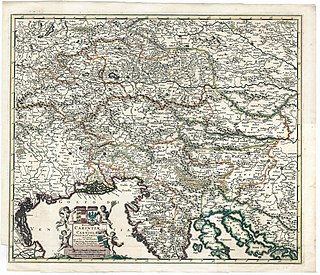
World War II in the Slovene Lands started in April 1941 and lasted until May 1945. The Slovene Lands were in a unique situation during World War II in Europe. In addition to being trisected, a fate which also befell Greece, Drava Banovina was the only region that experienced a further step—absorption and annexation into neighboring Nazi Germany, Fascist Italy, and Hungary. The Slovene-settled territory was divided largely between Nazi Germany and the Kingdom of Italy, with smaller territories occupied and annexed by Hungary and the Independent State of Croatia.
Deleči Vrh is a remote abandoned settlement in the Municipality of Dolenjske Toplice in southern Slovenia. The area is part of the traditional region of Lower Carniola and is now included in the Southeast Slovenia Statistical Region. Its territory is now part of the village of Podstenice.

The Cooperative Business Bank Building is a building designed in 1921 by architect Ivan Vurnik and his wife Helena Vurnik in the so-called Slovene "National Style" using decorative ornaments in the colors of Slovene tricolor and was inspired by the Vienna Secession style of architecture. It was commissioned by the Cooperative Business Bank, a local credit institution. It is located on Miklosich Street, Ljubljana, capital city of Slovenia, and has been called "the most beautiful building" in Ljubljana.
